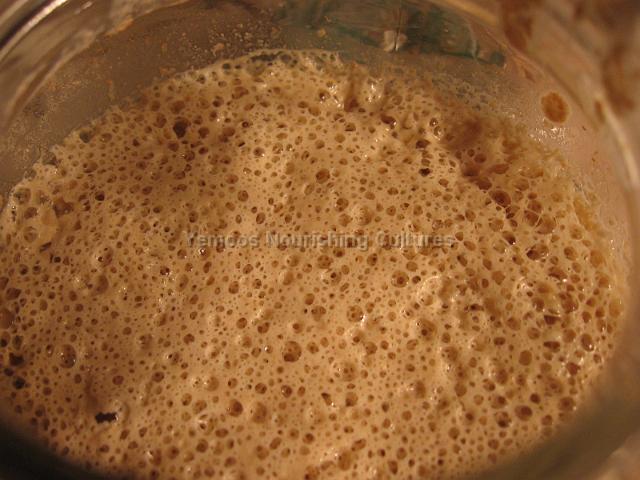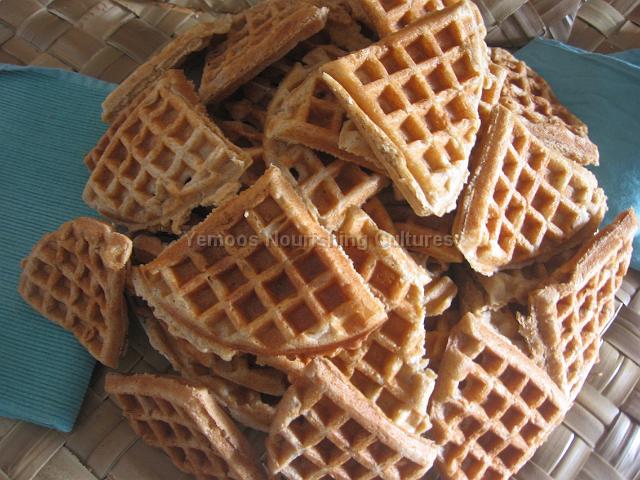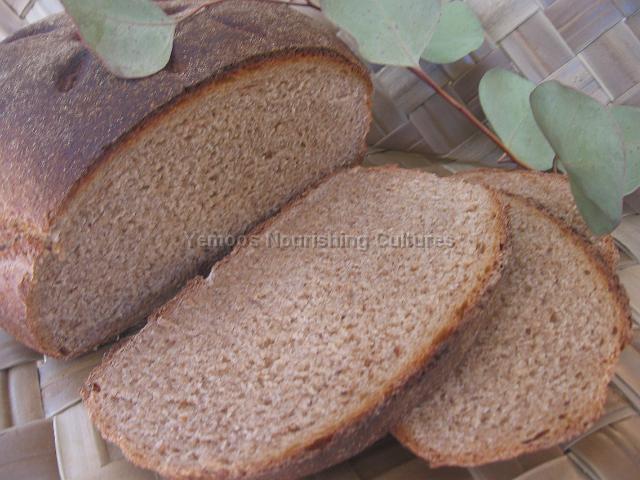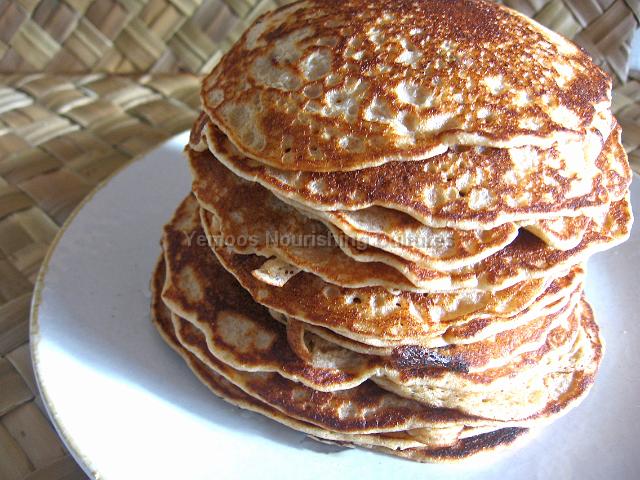Sourdough Pictures
In our picture sets you can expect to find the following (more pictures coming soon!):
• Research Findings (any experiments we've documented w/ our camera)
• Descriptive Pics (measurements, size, colors, etc)
• Fun Pics (artsy stuff and crazy looking cultures!)
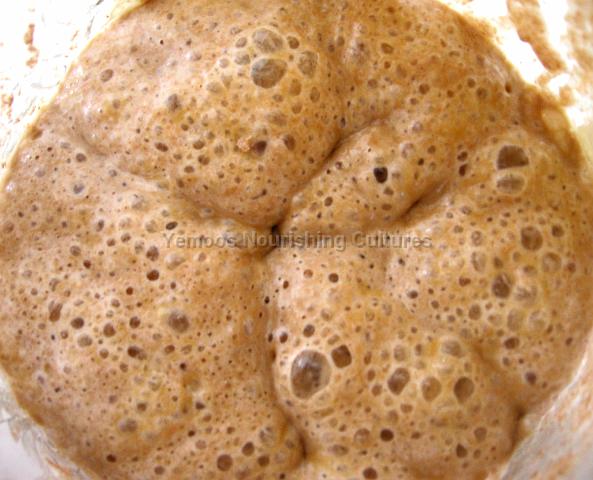
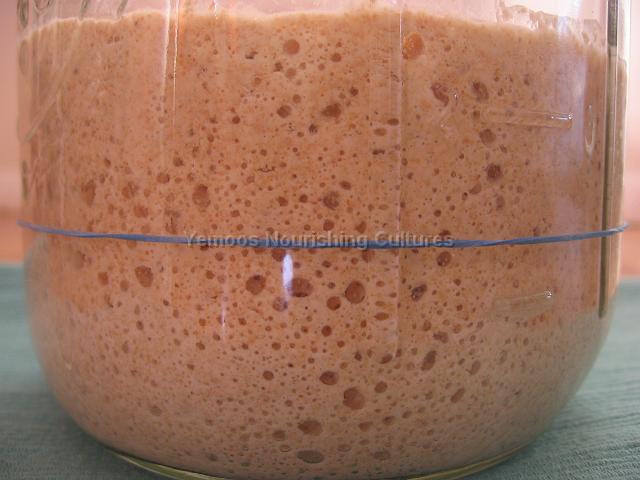
Starter that has doubled. It is active and just about ready for a new feeding (it will start to collapse when it runs out of sugars in the flour to consume).
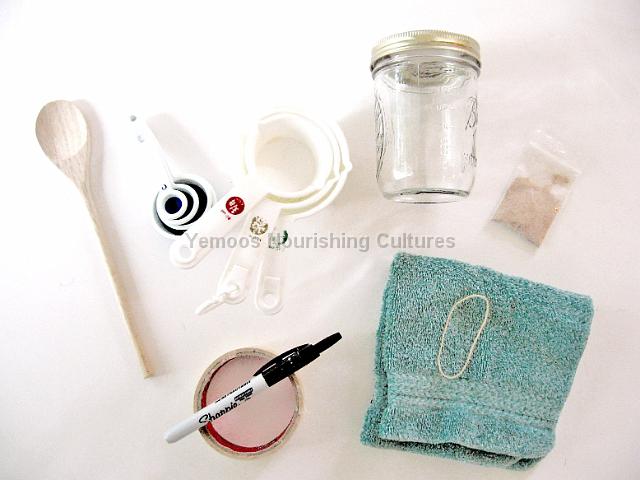
A quick snapshot of all the supplies to have on hand for your starter - (clockwise) a wooden spoon, some measuring spoons and cups, a jar to put it in, the starter, a cloth for the lid some masking tape and a marker and/or a rubber band.
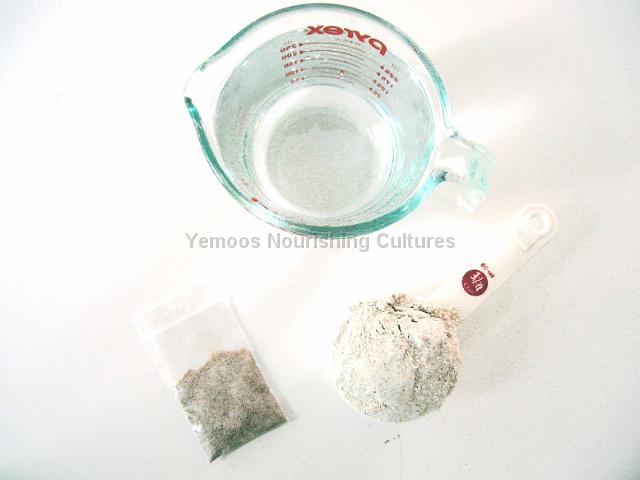
The ingredients you need for your starter (and sourdough baking basically too!). Just water and flour and the starter!
A wetter starter will have tons of bubbles at the top - almost a frothy appearance. It will have trouble 'doubling' because the bubbles can't get trapped in such wet starter. Try adding more flour to firm it up and aid in the doubling. It's not necessary to see the doubling, its just easier because you visually can see and know when to feed it. Once you get the hang of sourdough you can make a wetter starter and estimate when to feed it.
We like to make a huge batch of waffles, fold wax paper inbetween and freeze. These taste fresh and delicious when popped in the toaster for breakfast or a snack!
Whole grain bread is darker and will always be tighter in crumb (smaller holes, denser bread). But it's healthy, and fresh ground grains are not nearly as bitter as the whole grain breads at the store!
We do the same thing for our pancakes as waffles (see the waffle pic). They are THE best! So delicious. Pop these little guys in the toaster if you freeze extra.

White bread will have a more open crumb (larger holes, lighter bread), and is delicious - especially with that crunchy oven crust!
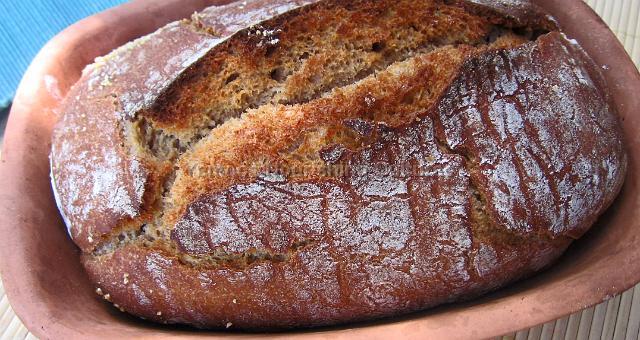
Bread baked in clay baking vessels really comes out well. This is our very own bread photographed here. The clay breathes well and holds in moisture and heat, making an amazing crust and golden color, and moist bread that cooks really evenly too. It also helps hold the bread to its shape (instead of spreading out on a cookie pan with no side support!). We love baking bread in this because its so foolproof and delicious.
Learn More About Sourdough:
- Sourdough Overview
- How to Make Sourdough (Step-by-Step Instructions)
-
What is Sourdough?
- Meet our Sourdough Starter
- The Difference Between Commercial Sourdough and Homemade Sourdough
- Sourdough Fun Facts
- Sourdough Dictionary
- Sourdough Mini Picture Guide and Interpretation
- Preparing Your Starter Before Baking
- Feeding, Vacation & Storage of Sourdough
- Starter Troubleshooting
- Baking Troubleshooting
- Baking Conversion Chart
- Sourdough Recipes
- Gluten-free Sourdough Recipes
- Sourdough Varieties of the World
- Sourdough Videos
- Purchase a Sourdough Starter


